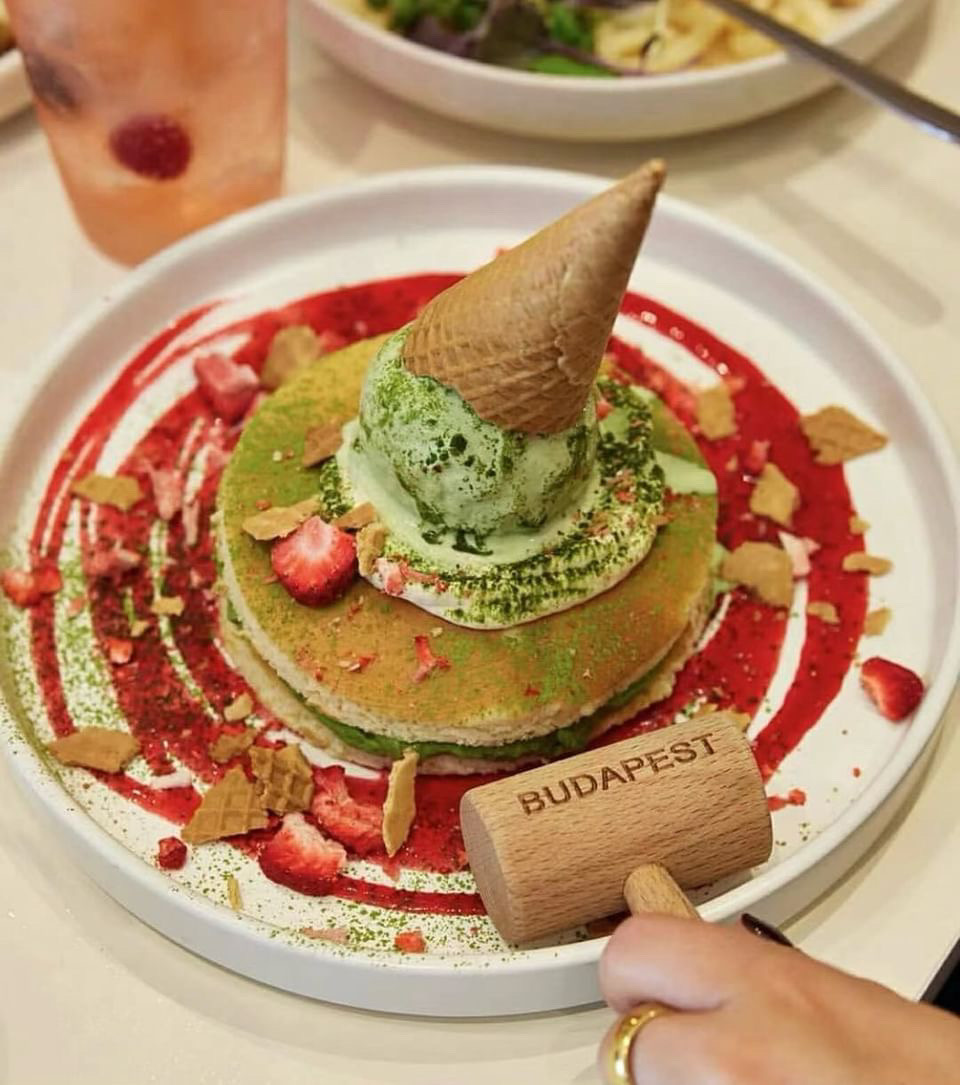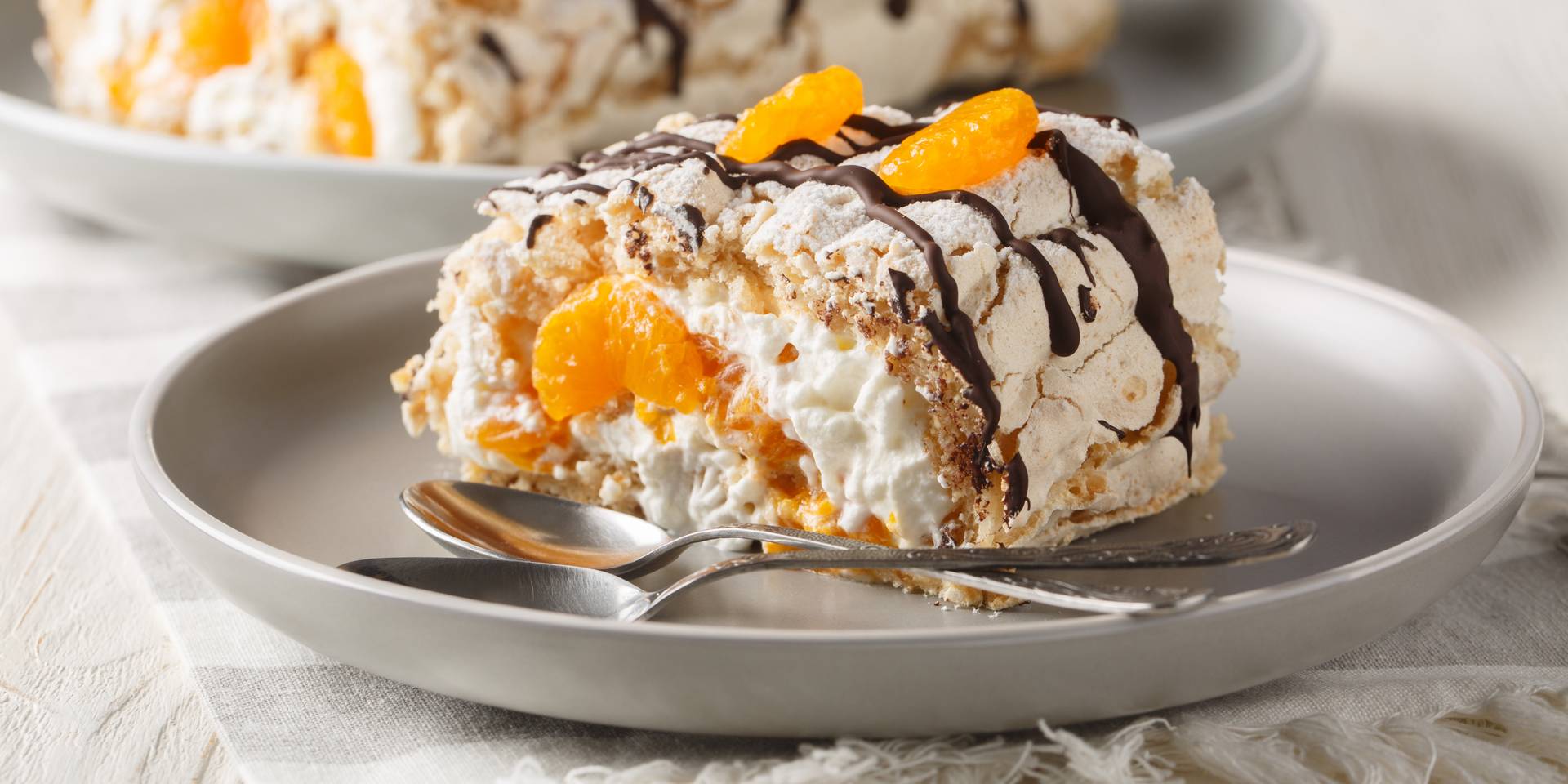The popular Budapest cake that Hungarians don't even know about
Budapestbakelse, Budapestrulle, Budapestlängd – these names all refer to a single dessert, the Budapest roll, a true Swedish classic, available in many traditional cafés in the Scandinavian country. But what is this that we Hungarians have never even heard of? The original recipe includes a meringue base (whipped egg whites) and ground and chopped hazelnuts, which, after being baked and cooled, are then spread with whipped cream and topped with tangerine slices. This is then rolled up, topped with the chocolate syrup garnish, and that's it. Of course, we're not the only ones modernising traditional recipes: many bakeries fill the roll with raspberries or strawberries – although experts say the original flavour harmony is so good it's a shame to change it.
But what does this have to do with us? The confection was created in 1969 by a Swedish pastry chef, Ingvar Strid, who had tasted the Esterházy Cake (vanilla cream that is sandwiched between layers of walnut-infused sponge cake and topped with a thin layer of fondant) during a visit to Budapest and wanted to reproduce something similar. Still, walnuts were expensive in northern Europe at the time, so he substituted hazelnuts. (The cake is particularly popular in the creator's hometown of Vetlanda, where it has its own holiday (1 May), and a 27-metre-long cake was once baked. The triumph of the Budapest roll has also been driven by social change. In the 1970s, more and more women took jobs, so they no longer had the time to slave away in the kitchen for hours on end when they got home. But families still demanded an everyday after-dinner dessert, so the time-saving, easy-to-assemble cake became a hit. It also helped that canning became very popular in the 60s and 70s, and any kind of compote could be used for this dessert, so it never became boring.
Hungarians haven’t inspired the Grand Budapest Hotel, either
One of the most popular films by director Wes Anderson, known for the unique atmosphere of his films, Grand Budapest Hotel is a star-studded film that revolves around a grand hotel in a fictional Central and Eastern European country. The movie's art direction is so iconic that speculation immediately began as to what inspired the fictional hotel. Anderson had visited the Corinthia Grand Hotel Royal in Budapest years before the shooting but later denied in a statement that he had modelled his hotel on it. However, the official position is that the director and his team studied several stately hotels – including the Hotel Adlon Kempinski in Berlin and the world-famous Hotel Savoy in London – but most of the elements were probably lifted from two grand hotels in Karlovy Vary. These include the five-star Grandhotel Pupp, the most elegant hotel in the small Czech town, which was the main inspiration, and the nearby Bristol Palace Hotel, which inspired the distinctive pink colour scheme.
Budapest coffee chain thousands of kilometres from Hungary
The Budapest Café was once a two-unit chain, but now it has shrunk to a single unit, as the café in the city of Chengdu in the Sichuan province has closed. But the Melbourne shop is still open! The clean, contemporary, youthful interiors were inspired by the aforementioned movie, and it's no coincidence that the fictional Mendl's confectionery in the story is also sold here in the iconic pink turn-of-the-century packaging. But the curiosity of the bistro restaurant and café is its signature dessert, available in a variety of colours – one of which, coincidentally, is also available in the Hungarian tricolour. The American pancake with mixed berry and fruit purée comes with a wooden hammer engraved with the name Budapest. Its role is to smash the inverted sweet cone that tops the composition, giving the dessert a unique look.

Bar on the Italian coast
And there's more! On the seafront of Ostia, which was once an independent city encompassing the port and beach of Rome but became part of the Eternal City in 1976, our employee on vacation a few years ago discovered the name Budapest on a bar sign. Bar Budapest is named after the Hungarian capital because the movie Snack Bar Budapest, released in 1988, was filmed on the Ostia Bridge.
Have you ever come across the name Budapest in another part of the world? If so, feel free to share it with us!
(Cover photo: Getty Images)




